 York House, St. James's Park, Robert Wallis, 1794–1878, British, after Thomas Hosmer Shepherd, 1792–1864, British, 1828, Hand colored engraving Stock Photohttps://www.alamy.com/licenses-and-pricing/?v=1https://www.alamy.com/york-house-st-jamess-park-robert-wallis-17941878-british-after-thomas-hosmer-shepherd-17921864-british-1828-hand-colored-engraving-image389700172.html
York House, St. James's Park, Robert Wallis, 1794–1878, British, after Thomas Hosmer Shepherd, 1792–1864, British, 1828, Hand colored engraving Stock Photohttps://www.alamy.com/licenses-and-pricing/?v=1https://www.alamy.com/york-house-st-jamess-park-robert-wallis-17941878-british-after-thomas-hosmer-shepherd-17921864-british-1828-hand-colored-engraving-image389700172.htmlRM2DJ0AF8–York House, St. James's Park, Robert Wallis, 1794–1878, British, after Thomas Hosmer Shepherd, 1792–1864, British, 1828, Hand colored engraving
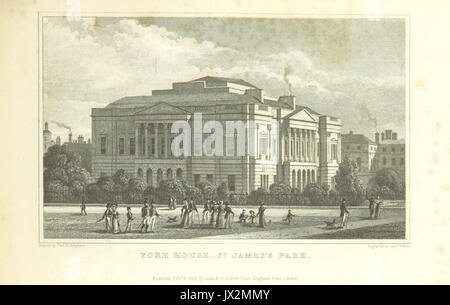 York House, St James's Park Shepherd, Metropolitan Improvements (1828), p297 Stock Photohttps://www.alamy.com/licenses-and-pricing/?v=1https://www.alamy.com/york-house-st-jamess-park-shepherd-metropolitan-improvements-1828-image153724171.html
York House, St James's Park Shepherd, Metropolitan Improvements (1828), p297 Stock Photohttps://www.alamy.com/licenses-and-pricing/?v=1https://www.alamy.com/york-house-st-jamess-park-shepherd-metropolitan-improvements-1828-image153724171.htmlRMJX2MMY–York House, St James's Park Shepherd, Metropolitan Improvements (1828), p297
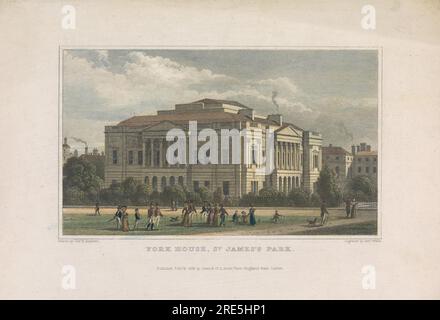 York House, St. James's Park 1828 by Robert William Wallis Stock Photohttps://www.alamy.com/licenses-and-pricing/?v=1https://www.alamy.com/york-house-st-jamess-park-1828-by-robert-william-wallis-image559460665.html
York House, St. James's Park 1828 by Robert William Wallis Stock Photohttps://www.alamy.com/licenses-and-pricing/?v=1https://www.alamy.com/york-house-st-jamess-park-1828-by-robert-william-wallis-image559460665.htmlRM2RE5HP1–York House, St. James's Park 1828 by Robert William Wallis
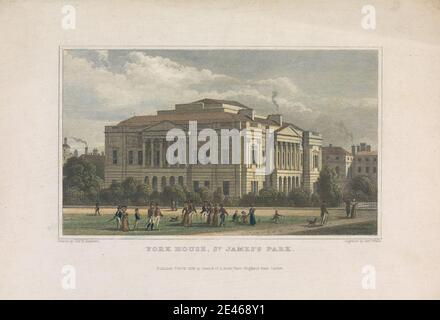 Robert Wallis, 1794–1878, British, York House, St. James's Park, 1828. Hand colored engraving. Stock Photohttps://www.alamy.com/licenses-and-pricing/?v=1https://www.alamy.com/robert-wallis-17941878-british-york-house-st-jamess-park-1828-hand-colored-engraving-image398435829.html
Robert Wallis, 1794–1878, British, York House, St. James's Park, 1828. Hand colored engraving. Stock Photohttps://www.alamy.com/licenses-and-pricing/?v=1https://www.alamy.com/robert-wallis-17941878-british-york-house-st-jamess-park-1828-hand-colored-engraving-image398435829.htmlRM2E468Y1–Robert Wallis, 1794–1878, British, York House, St. James's Park, 1828. Hand colored engraving.
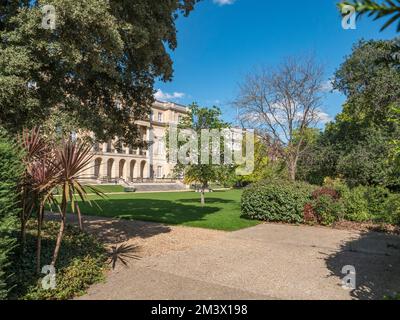 The rear gardens of Lancaster House (originally known as York House and then Stafford House), a mansion in the St James's district of London, UK. Stock Photohttps://www.alamy.com/licenses-and-pricing/?v=1https://www.alamy.com/the-rear-gardens-of-lancaster-house-originally-known-as-york-house-and-then-stafford-house-a-mansion-in-the-st-jamess-district-of-london-uk-image501516436.html
The rear gardens of Lancaster House (originally known as York House and then Stafford House), a mansion in the St James's district of London, UK. Stock Photohttps://www.alamy.com/licenses-and-pricing/?v=1https://www.alamy.com/the-rear-gardens-of-lancaster-house-originally-known-as-york-house-and-then-stafford-house-a-mansion-in-the-st-jamess-district-of-london-uk-image501516436.htmlRM2M3X198–The rear gardens of Lancaster House (originally known as York House and then Stafford House), a mansion in the St James's district of London, UK.
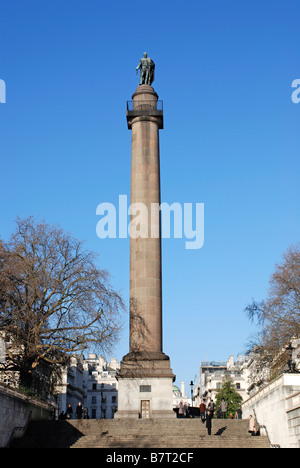 Duke of York statue London Stock Photohttps://www.alamy.com/licenses-and-pricing/?v=1https://www.alamy.com/stock-photo-duke-of-york-statue-london-22041727.html
Duke of York statue London Stock Photohttps://www.alamy.com/licenses-and-pricing/?v=1https://www.alamy.com/stock-photo-duke-of-york-statue-london-22041727.htmlRMB7T2CF–Duke of York statue London
![Old Charing-Cross, from Aggas's plan of London, 1864. 'Charing-cross, the large area at the meeting of the Strand, Whitehall, and Cockspur-street, with Trafalgar-square on the north, received the latter part of its name from the stone cross erected there (1291-94) to Eleanor, Queen of Edward I.; and was the last resting-place of her remains on the way from Northampton to their final repository in Westminster Abbey. The etymology of Charing remains unaccounted for. The fanciful notion that it owes its name to the circumstance above related, being derived from chère Reine [dear Queen], is m Stock Photo Old Charing-Cross, from Aggas's plan of London, 1864. 'Charing-cross, the large area at the meeting of the Strand, Whitehall, and Cockspur-street, with Trafalgar-square on the north, received the latter part of its name from the stone cross erected there (1291-94) to Eleanor, Queen of Edward I.; and was the last resting-place of her remains on the way from Northampton to their final repository in Westminster Abbey. The etymology of Charing remains unaccounted for. The fanciful notion that it owes its name to the circumstance above related, being derived from chère Reine [dear Queen], is m Stock Photo](https://l450v.alamy.com/450v/2wrgy93/old-charing-cross-from-aggass-plan-of-london-1864-charing-cross-the-large-area-at-the-meeting-of-the-strand-whitehall-and-cockspur-street-with-trafalgar-square-on-the-north-received-the-latter-part-of-its-name-from-the-stone-cross-erected-there-1291-94-to-eleanor-queen-of-edward-i-and-was-the-last-resting-place-of-her-remains-on-the-way-from-northampton-to-their-final-repository-in-westminster-abbey-the-etymology-of-charing-remains-unaccounted-for-the-fanciful-notion-that-it-owes-its-name-to-the-circumstance-above-related-being-derived-from-chxe8re-reine-dear-queen-is-m-2wrgy93.jpg) Old Charing-Cross, from Aggas's plan of London, 1864. 'Charing-cross, the large area at the meeting of the Strand, Whitehall, and Cockspur-street, with Trafalgar-square on the north, received the latter part of its name from the stone cross erected there (1291-94) to Eleanor, Queen of Edward I.; and was the last resting-place of her remains on the way from Northampton to their final repository in Westminster Abbey. The etymology of Charing remains unaccounted for. The fanciful notion that it owes its name to the circumstance above related, being derived from chère Reine [dear Queen], is m Stock Photohttps://www.alamy.com/licenses-and-pricing/?v=1https://www.alamy.com/old-charing-cross-from-aggass-plan-of-london-1864-charing-cross-the-large-area-at-the-meeting-of-the-strand-whitehall-and-cockspur-street-with-trafalgar-square-on-the-north-received-the-latter-part-of-its-name-from-the-stone-cross-erected-there-1291-94-to-eleanor-queen-of-edward-i-and-was-the-last-resting-place-of-her-remains-on-the-way-from-northampton-to-their-final-repository-in-westminster-abbey-the-etymology-of-charing-remains-unaccounted-for-the-fanciful-notion-that-it-owes-its-name-to-the-circumstance-above-related-being-derived-from-chxe8re-reine-dear-queen-is-m-image599662255.html
Old Charing-Cross, from Aggas's plan of London, 1864. 'Charing-cross, the large area at the meeting of the Strand, Whitehall, and Cockspur-street, with Trafalgar-square on the north, received the latter part of its name from the stone cross erected there (1291-94) to Eleanor, Queen of Edward I.; and was the last resting-place of her remains on the way from Northampton to their final repository in Westminster Abbey. The etymology of Charing remains unaccounted for. The fanciful notion that it owes its name to the circumstance above related, being derived from chère Reine [dear Queen], is m Stock Photohttps://www.alamy.com/licenses-and-pricing/?v=1https://www.alamy.com/old-charing-cross-from-aggass-plan-of-london-1864-charing-cross-the-large-area-at-the-meeting-of-the-strand-whitehall-and-cockspur-street-with-trafalgar-square-on-the-north-received-the-latter-part-of-its-name-from-the-stone-cross-erected-there-1291-94-to-eleanor-queen-of-edward-i-and-was-the-last-resting-place-of-her-remains-on-the-way-from-northampton-to-their-final-repository-in-westminster-abbey-the-etymology-of-charing-remains-unaccounted-for-the-fanciful-notion-that-it-owes-its-name-to-the-circumstance-above-related-being-derived-from-chxe8re-reine-dear-queen-is-m-image599662255.htmlRM2WRGY93–Old Charing-Cross, from Aggas's plan of London, 1864. 'Charing-cross, the large area at the meeting of the Strand, Whitehall, and Cockspur-street, with Trafalgar-square on the north, received the latter part of its name from the stone cross erected there (1291-94) to Eleanor, Queen of Edward I.; and was the last resting-place of her remains on the way from Northampton to their final repository in Westminster Abbey. The etymology of Charing remains unaccounted for. The fanciful notion that it owes its name to the circumstance above related, being derived from chère Reine [dear Queen], is m
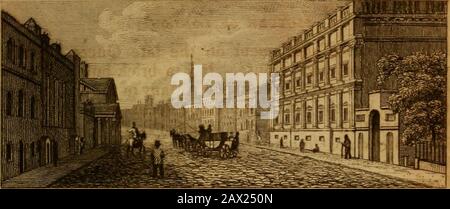 The original Picture of London . Westward, it extended fromthe river to St .Jamess Park, along the eastern boundary ofwhich many of its various buildings lay, from the Cockpit,which it included, to Spring Gardens. It was originally theproperty of Hubert de Burgh, Justiciary of England underHenry HI., from whom it passed to the Archbishops ofYork, and was from them long called York House. Hen-ry VIII. seized it on the fall of Cardinal Wolsey, then Arch-bishop of York, and from that time it became the resi-dence of the kings of England, till the reign of QueenAnne, who held her court at St. Jame Stock Photohttps://www.alamy.com/licenses-and-pricing/?v=1https://www.alamy.com/the-original-picture-of-london-westward-it-extended-fromthe-river-to-st-jamess-park-along-the-eastern-boundary-ofwhich-many-of-its-various-buildings-lay-from-the-cockpitwhich-it-included-to-spring-gardens-it-was-originally-theproperty-of-hubert-de-burgh-justiciary-of-england-underhenry-hi-from-whom-it-passed-to-the-archbishops-ofyork-and-was-from-them-long-called-york-house-hen-ry-viii-seized-it-on-the-fall-of-cardinal-wolsey-then-arch-bishop-of-york-and-from-that-time-it-became-the-resi-dence-of-the-kings-of-england-till-the-reign-of-queenanne-who-held-her-court-at-st-jame-image343025893.html
The original Picture of London . Westward, it extended fromthe river to St .Jamess Park, along the eastern boundary ofwhich many of its various buildings lay, from the Cockpit,which it included, to Spring Gardens. It was originally theproperty of Hubert de Burgh, Justiciary of England underHenry HI., from whom it passed to the Archbishops ofYork, and was from them long called York House. Hen-ry VIII. seized it on the fall of Cardinal Wolsey, then Arch-bishop of York, and from that time it became the resi-dence of the kings of England, till the reign of QueenAnne, who held her court at St. Jame Stock Photohttps://www.alamy.com/licenses-and-pricing/?v=1https://www.alamy.com/the-original-picture-of-london-westward-it-extended-fromthe-river-to-st-jamess-park-along-the-eastern-boundary-ofwhich-many-of-its-various-buildings-lay-from-the-cockpitwhich-it-included-to-spring-gardens-it-was-originally-theproperty-of-hubert-de-burgh-justiciary-of-england-underhenry-hi-from-whom-it-passed-to-the-archbishops-ofyork-and-was-from-them-long-called-york-house-hen-ry-viii-seized-it-on-the-fall-of-cardinal-wolsey-then-arch-bishop-of-york-and-from-that-time-it-became-the-resi-dence-of-the-kings-of-england-till-the-reign-of-queenanne-who-held-her-court-at-st-jame-image343025893.htmlRM2AX250N–The original Picture of London . Westward, it extended fromthe river to St .Jamess Park, along the eastern boundary ofwhich many of its various buildings lay, from the Cockpit,which it included, to Spring Gardens. It was originally theproperty of Hubert de Burgh, Justiciary of England underHenry HI., from whom it passed to the Archbishops ofYork, and was from them long called York House. Hen-ry VIII. seized it on the fall of Cardinal Wolsey, then Arch-bishop of York, and from that time it became the resi-dence of the kings of England, till the reign of QueenAnne, who held her court at St. Jame